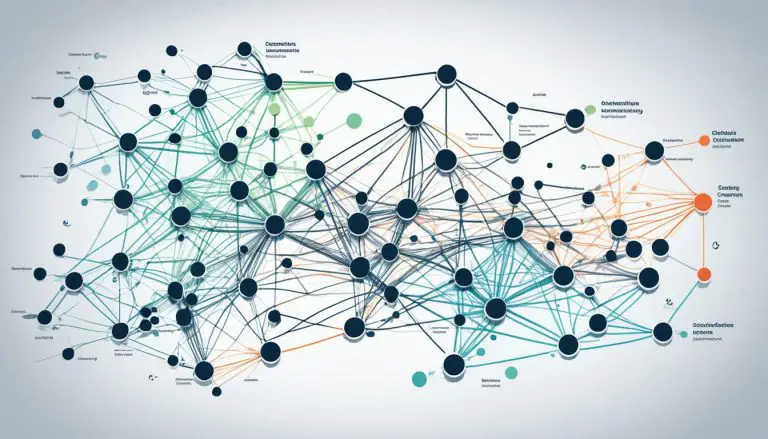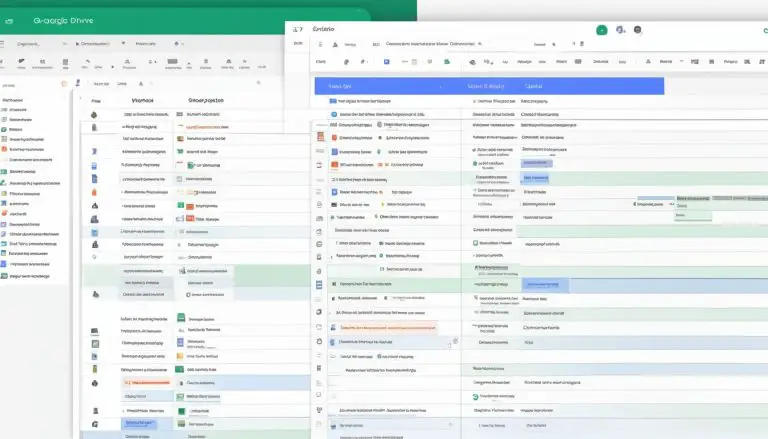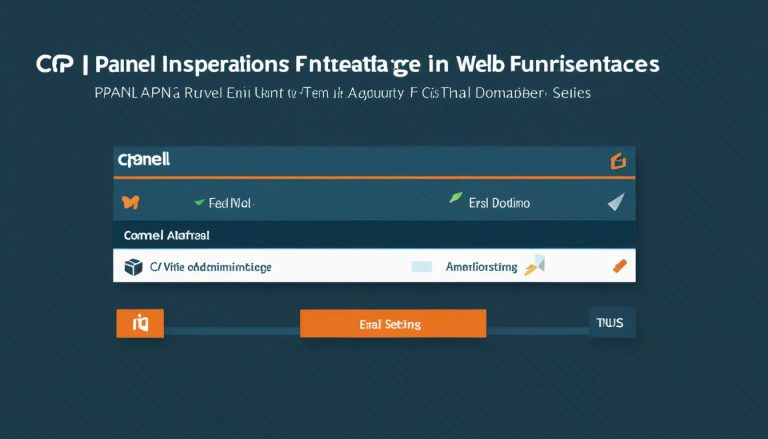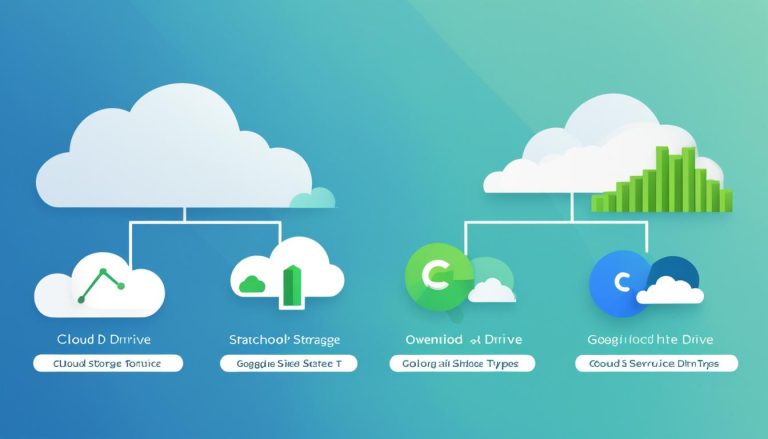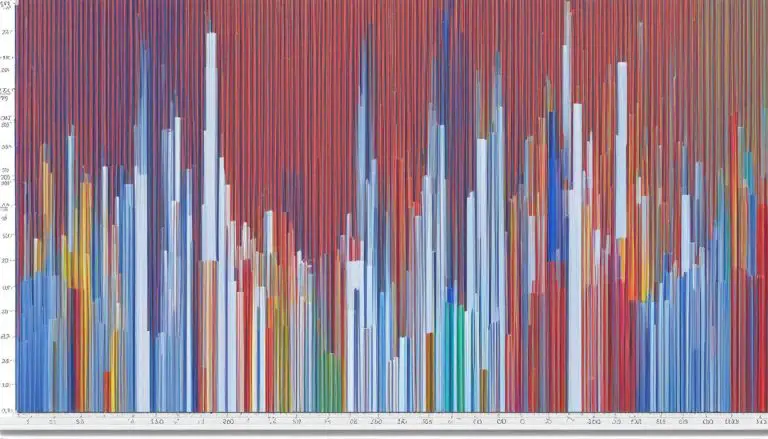In a Nutshell: What is Procedural Programming?
Procedural programming is a fundamental programming paradigm that involves writing programs as sequences of instructions to be executed. It focuses on dividing programs into named sets of instructions called procedures, which are similar to functions. Procedures can store local data and can access and modify global data variables. Some early procedural programming languages include Fortran and ALGOL. Procedural programming follows structured programming practices and uses block-based control flow. It is characterized by the use of sequences of instructions, procedures that can be invoked from other parts of the code, and the ability to accept arguments and return values.
Key Takeaways:
- Procedural programming is a programming paradigm based on sequences of instructions.
- It involves dividing programs into procedures or logical blocks consisting of groups of instructions.
- Procedural programming languages include Fortran and ALGOL.
- Procedural programming follows structured programming practices and uses block-based control flow.
- Procedural programming allows for the use of procedures that can be invoked from other parts of the code.
Tenets of Procedural Programming
Procedural programming, as a programming paradigm, is guided by several fundamental tenets that shape its approach and principles. These tenets provide a foundation for designing and implementing procedural programs in a structured and efficient manner.
One of the main tenets of procedural programming is the concept of breaking down a program into sequences of instructions. These instructions are executed in a specific order, allowing for a step-by-step execution of the program. This sequencing of instructions forms the core structure of procedural programs, enabling developers to define the flow and logic of the program.
The minimal abstraction between the code and the machine is another key tenet of procedural programming. Unlike other programming paradigms that rely heavily on abstraction layers, procedural programming aims to keep the code closer to the underlying hardware. By working directly with instructions and logical blocks, procedural programmers have more control and visibility over the execution of their code.
The use of procedures or logical blocks consisting of groups of instructions is another critical aspect of procedural programming. Procedures allow for the organization and reuse of code, making it easier to manage and maintain complex programs. These procedures can be invoked from different parts of the code, enhancing code modularity and reusability.
Procedural Programming vs. Object-Oriented Programming
Procedural programming and object-oriented programming are two distinct programming paradigms. Procedural programming focuses on the sequence of steps required to complete a task, while object-oriented programming emphasizes the interaction between objects.
In procedural programming, code is organized into procedures or logical blocks consisting of groups of instructions. These procedures can be invoked from other parts of the code, and they have the ability to accept arguments and return values. Global variables are used to store and modify data.
On the other hand, object-oriented programming uses objects with attributes (data) and methods (functions). Objects encapsulate both the data and the operations that can be performed on that data. The interaction between objects is facilitated through message passing. Access specifiers like private, public, and protected are used to control the visibility and accessibility of data and methods. Object-oriented programming also incorporates the concept of inheritance, allowing objects to inherit characteristics and behaviors from parent objects.
When choosing between procedural programming and object-oriented programming, it is crucial to consider the requirements of the project and the capabilities of the programming language. Procedural programming is often more suitable for smaller, less complex projects, while object-oriented programming offers a more modular and scalable approach that is well-suited for larger projects with multiple interacting objects and complex relationships between them.

Advantages of Procedural Programming
Procedural programming offers several advantages that make it a popular choice among developers. Here are some key advantages of procedural programming:
- Simplicity: Procedural programming focuses on sequences of instructions, making it easier to write and understand code. It follows a step-by-step approach, making it simple to implement and debug.
- Easy implementation: With procedural programming, developers can break down complex tasks into smaller procedures or functions. This modular approach simplifies code development and maintenance.
- Availability of resources: Procedural programming has been around for decades, which means there are abundant resources available for learning and implementing procedural programming concepts and algorithms.
- Code reusability: Procedures can be invoked from different parts of the program, allowing for code reuse. This promotes efficiency and reduces the amount of redundant code that needs to be written.
- Portability: Procedural programming languages can be easily ported across different platforms. This makes it convenient to develop applications that can run on various operating systems and hardware.
Overall, procedural programming provides simplicity, ease of implementation, code reusability, and portability, making it a favorable choice for many developers.
Disadvantages of Procedural Programming
While procedural programming offers several advantages, it also has its fair share of disadvantages. It is important to consider these drawbacks when choosing the right programming paradigm for a project.
One major disadvantage of procedural programming is the difficulty of writing code. The sequential nature of the programming paradigm can make it challenging to manage complex programs. Additionally, procedural programming lacks the reusability of code that is often found in object-oriented programming. This means that developers may need to write repetitive code, resulting in longer development times and increased potential for errors.
Another drawback of procedural programming is the difficulty in relating to real-world objects. Procedural programming is based on the idea of breaking a problem down into a sequence of steps, which can make it less intuitive when working with real-world concepts. Object-oriented programming, on the other hand, provides a more natural way of representing and interacting with objects and their behaviors.
Furthermore, procedural programming often prioritizes operations over data. This can lead to a less organized and maintainable codebase, as the focus is on how operations are performed rather than on structuring and encapsulating data. This can make it harder to track and understand data flow within a program.
Overall, while procedural programming has its advantages, such as simplicity and ease of implementation, it is important to consider its limitations. Depending on the project requirements and complexity, alternative programming paradigms like object-oriented programming or functional programming may provide more suitable solutions.
Example Programming Languages for Procedural Programming
Procedural programming is a versatile paradigm that can be implemented in various programming languages. Below are some examples of popular programming languages commonly used for procedural programming:
| Programming Language | Usage |
|---|---|
| C | C is a high-level programming language known for its efficiency and flexibility. It is widely used for system programming and developing applications where performance is critical. |
| Pascal | Pascal is a procedural programming language designed for teaching programming and software development. It is known for its readability and structured programming features. |
| Fortran | Fortran is a general-purpose programming language that is widely used in scientific and numerical computing. It is known for its efficiency and array-based computations. |
| ALGOL | ALGOL is a family of procedural programming languages that has influenced the development of many other languages. It is known for its clear syntax and structured programming principles. |
| COBOL | COBOL is a procedural programming language primarily used in business, finance, and administrative systems. It is known for its English-like syntax and ability to handle large-scale data processing. |
| BASIC | BASIC (Beginner’s All-purpose Symbolic Instruction Code) is a procedural programming language designed for simplicity and ease of use. It is commonly used for teaching programming and creating small-scale applications. |
These are just a few examples of programming languages that support procedural programming. Each language has its strengths and weaknesses, and the choice of programming language depends on factors such as the project requirements, performance needs, and programmer preferences.
Understanding different programming languages and their capabilities is crucial for developers to choose the right tool for the job and create efficient and maintainable code.
Importance of Understanding Programming Paradigms
As software development continues to evolve, it’s crucial for developers to have a solid understanding of different programming paradigms. Programming paradigms provide a set of principles and practices that guide the development process. By understanding these paradigms, developers can make informed decisions about which approach to use for a particular project, ultimately improving the efficiency and maintainability of the code.
One of the main reasons why understanding programming paradigms is important is because different paradigms offer different ways of solving problems. For example, procedural programming focuses on the sequence of steps to complete a task, while object-oriented programming emphasizes the interaction between objects. By understanding the strengths and weaknesses of each paradigm, developers can choose the most suitable approach for their specific project requirements.
Additionally, programming paradigms play a crucial role in code reusability. Each paradigm provides its own mechanisms for organizing and structuring code. By understanding how these mechanisms work, developers can create reusable components that can be easily integrated into future projects, saving time and effort in the long run.
Role of programming paradigms in software development
Programming paradigms also play a significant role in the broader context of software development. They provide a foundation for designing software architectures and frameworks, allowing developers to build complex systems more efficiently. Understanding different paradigms enables developers to choose the most appropriate architecture for a given project, ensuring scalability, maintainability, and extensibility.
Furthermore, familiarity with multiple programming paradigms expands a developer’s problem-solving toolkit. Different paradigms offer different approaches to tackling complex problems, allowing developers to think more creatively and adapt their solutions to specific challenges. This versatility enhances a developer’s ability to innovate and deliver high-quality software.
In conclusion, understanding programming paradigms is essential for developers to navigate the ever-evolving landscape of software development. By gaining knowledge of different paradigms, developers can choose the most effective approach for their projects, optimize code reusability, and enhance their problem-solving abilities. As technology continues to advance, a deep understanding of programming paradigms will remain a valuable asset for any developer.
| Importance of Understanding Programming Paradigms |
|---|
| Provides a set of principles and practices |
| Aids in choosing the most suitable approach for a project |
| Enables code reusability and component integration |
| Forms the foundation for software architectures and frameworks |
| Enhances problem-solving abilities |
Comparison Between Procedural Programming and Object-Oriented Programming
Comparing procedural programming and object-oriented programming reveals distinct differences in program structure, approach, access specifiers, data hiding, code reusability, and focus. Procedural programming relies on sequences of instructions and functions, whereas object-oriented programming centers around objects, encapsulation, and inheritance. Let’s explore these differences in more detail.
Program Structure
In procedural programming, programs are composed of sequences of instructions organized into logical blocks or procedures. These procedures can be invoked from other parts of the code, accepting arguments and returning values. In contrast, object-oriented programming structures programs around objects. Objects have attributes and methods, allowing encapsulation of data and behavior within the object.
Approach
Procedural programming focuses on the sequence of steps required to complete a task. It is centered on dividing the program into smaller procedures, making it easier to understand and follow. On the other hand, object-oriented programming emphasizes the interaction between objects. It models real-world entities, allowing for better representation of complex systems and relationships.
Access Specifiers and Data Hiding
Procedural programming does not have access specifiers like private, public, or protected. All data and functions are accessible throughout the program. In contrast, object-oriented programming provides access specifiers to control the accessibility of data and methods. This allows for better data hiding and encapsulation, protecting data from unauthorized access.
Code Reusability
Procedural programming lacks inherent code reusability. Functions can be reused, but entire structures cannot be easily reused in different programs. Object-oriented programming, on the other hand, promotes code reusability through inheritance. Objects and classes can be reused and extended, resulting in more modular and maintainable code.
| Aspect | Procedural Programming | Object-Oriented Programming |
|---|---|---|
| Program Structure | Sequences of instructions and procedures | Objects with attributes and methods |
| Approach | Step-by-step task completion | Modeling real-world entities |
| Access Specifiers | No access specifiers | Private, public, protected |
| Data Hiding | Limited data hiding | Better data hiding through encapsulation |
| Code Reusability | Lacks inherent code reusability | Promotes code reusability through inheritance |
When choosing between procedural programming and object-oriented programming, developers need to consider the requirements and complexity of the project. Each paradigm has its own strengths and weaknesses, and the selection should align with the goals of the software development.
Introduction to Functional Programming
Functional programming is a programming paradigm that is based on mathematical functions and emphasizes the use of immutable data and pure functions. In contrast to procedural programming, which focuses on sequences of instructions, functional programming revolves around the concept of using functions to perform operations on input data. These functions do not have side effects and rely solely on the input arguments to produce an output, making them predictable and easier to reason about. Functional programming languages include Haskell, Lisp, and Clojure.
One of the key features of functional programming is the use of immutable data. This means that once a value is assigned to a variable, it cannot be changed. Instead of modifying existing data, functional programming encourages the creation of new data structures through operations such as mapping, filtering, and reducing. This approach ensures that the original data remains unchanged and allows for easier debugging and testing.
Another important aspect of functional programming is the concept of pure functions. A pure function is a function that, given the same input, will always produce the same output and does not cause any side effects. This means that pure functions do not modify any external state or rely on mutable data. Pure functions are deterministic, which makes them easier to understand, test, and reason about. They also promote code reuse and modularity.
Functional Programming Features:
- Use of immutable data
- Emphasis on pure functions
- Higher-order functions
- Lazy evaluation
- Pattern matching
Functional programming is a powerful paradigm that offers benefits such as code simplicity, absence of side effects, and a focus on input-based operations. By embracing immutability and pure functions, functional programming enables developers to write clean, reliable, and maintainable code. However, it may require a shift in mindset for developers accustomed to imperative or procedural programming. Understanding the principles and features of functional programming can expand a developer’s toolkit and provide new solutions to complex problems.
Conclusion
In conclusion, procedural programming is a fundamental programming paradigm that focuses on writing programs as sequences of instructions. The main idea is to divide programs into procedures, which are groups of instructions that can be invoked and reused throughout the code. This approach offers several advantages, including simplicity, ease of implementation, and code reusability.
However, it’s important to note that procedural programming also has its disadvantages. These include the difficulty of writing complex code, the lack of reusability compared to object-oriented programming, and potential security issues. Therefore, it’s crucial for developers to consider the requirements of their projects and evaluate which programming paradigm best suits their needs.
Understanding different programming paradigms, including procedural programming, is essential for developers to make informed decisions in software development. By having a comprehensive understanding of the strengths and weaknesses of procedural programming, developers can choose the right paradigm for their projects, ensuring efficient and effective code implementation.
FAQ
What is procedural programming?
Procedural programming is a programming paradigm that involves writing programs as sequences of instructions to be executed. It focuses on dividing programs into named sets of instructions called procedures, which are similar to functions.
What are the tenets of procedural programming?
The tenets of procedural programming include the idea that programs are composed of sequences of instructions, minimal abstraction between the code and the machine, the use of procedures or logical blocks consisting of groups of instructions, the ability to invoke procedures from other parts of the code, the acceptance of arguments and return values by procedures, the access and modification of global variables by procedures, and the use of block-based control flow.
How does procedural programming differ from object-oriented programming?
Procedural programming focuses on the sequence of steps to complete a task, while object-oriented programming emphasizes the interaction between objects. Procedural programming uses procedures and global variables, while object-oriented programming uses objects with attributes and methods. Procedural programming does not have access specifiers, while object-oriented programming has access specifiers like private, public, and protected. Procedural programming does not have proper data hiding, while object-oriented programming provides data hiding.
What are the advantages of procedural programming?
Procedural programming offers advantages such as simplicity, ease of implementation, availability of resources for learning and algorithms, portability of source code, reusability of code, reduced memory requirements, and easy tracking of program flow.
What are the disadvantages of procedural programming?
Some disadvantages of procedural programming include the difficulty of writing code, lack of reusability, difficulty relating to real-world objects, priority given to operations over data, exposure of data to the entire program, and potential security issues.
What are some examples of programming languages used for procedural programming?
Programming languages commonly used for procedural programming include C, Pascal, Fortran, ALGOL, COBOL, and BASIC.
Why is it important to understand programming paradigms?
Understanding programming paradigms, including procedural programming, is important for developers to make informed decisions in software development. Different programming paradigms are suited for different projects, and the choice of paradigm can impact the development process, code efficiency, and code reusability.
How does procedural programming compare to object-oriented programming?
Procedural programming and object-oriented programming have several differences in terms of program structure, approach, access specifiers, data hiding, code reusability, and focus on data or function. Procedural programming relies on sequences of instructions and functions, while object-oriented programming focuses on objects, encapsulation, and inheritance.
What is functional programming?
Functional programming is another programming paradigm that is based on mathematical functions and emphasizes the use of immutable data and pure functions. It offers advantages such as a protected environment, code simplicity, absence of side-effects, and a focus on input-based operations.
What is the conclusion about procedural programming?
Procedural programming is a fundamental programming paradigm that involves writing programs as sequences of instructions. It offers advantages such as simplicity, ease of implementation, and code reusability, but also has some disadvantages. Understanding different programming paradigms, including procedural programming, is important for developers to make informed decisions in software development.
- About the Author
- Latest Posts
Janina is a technical editor at Text-Center.com and loves to write about computer technology and latest trends in information technology. She also works for Biteno.com.

